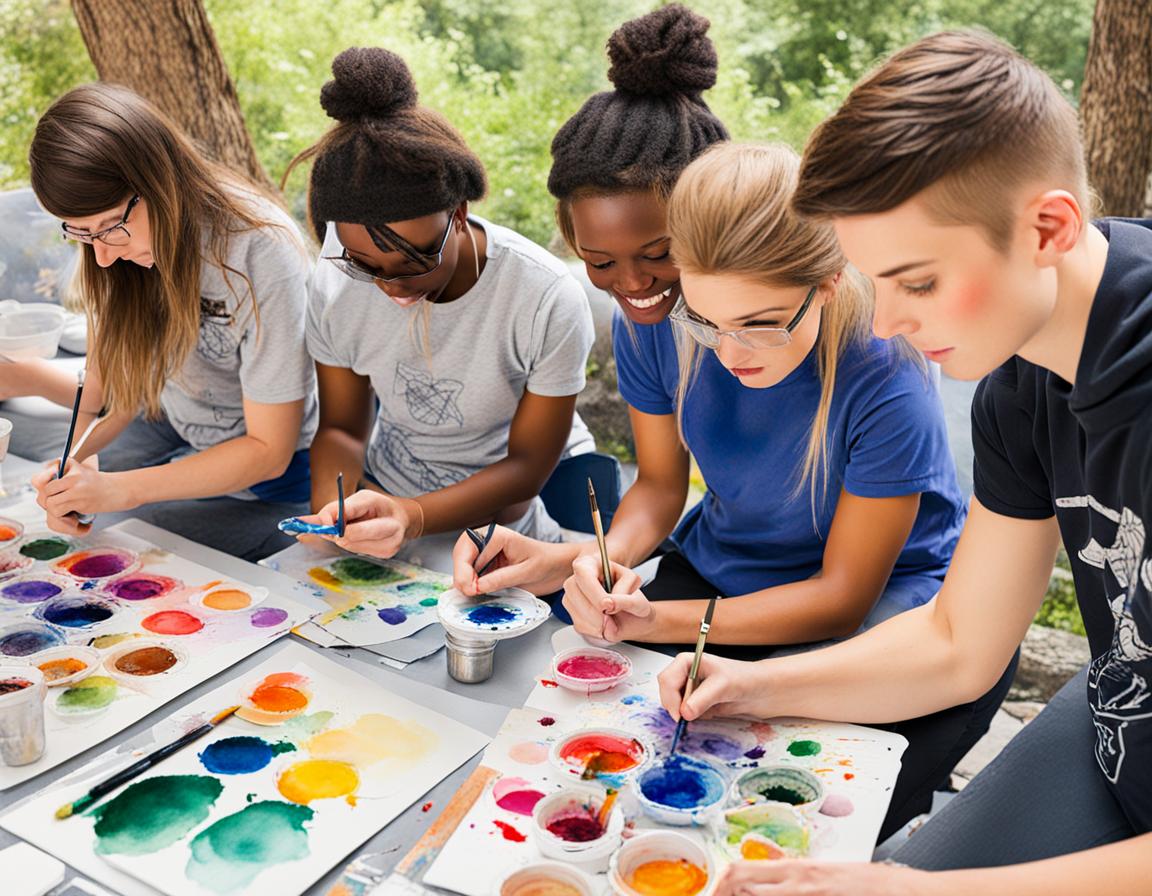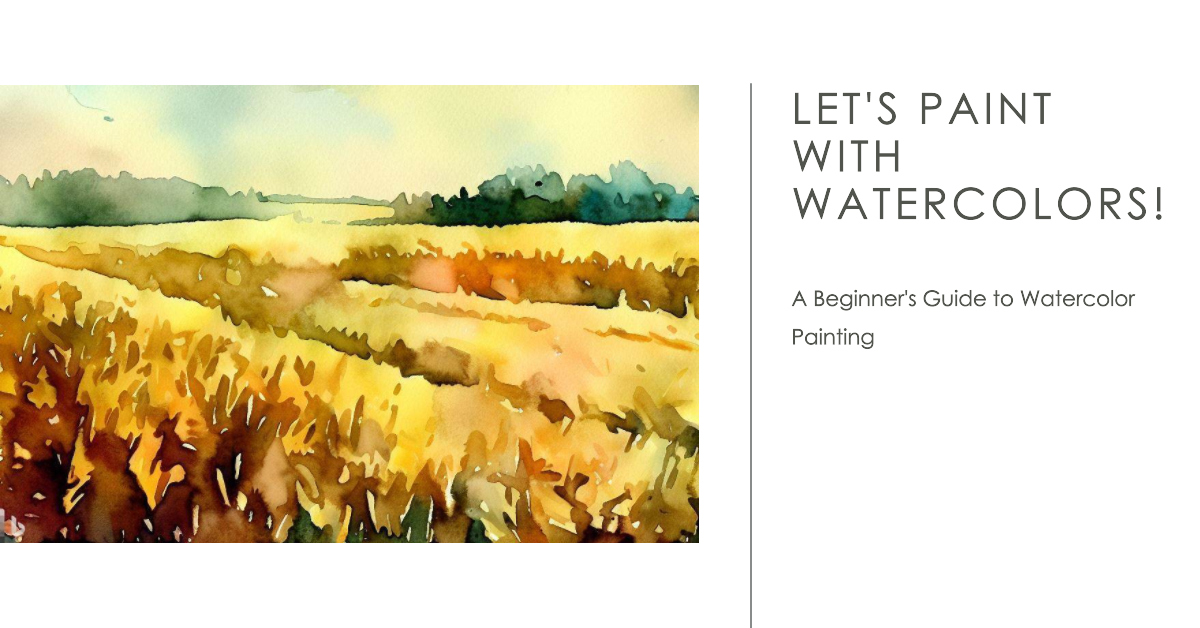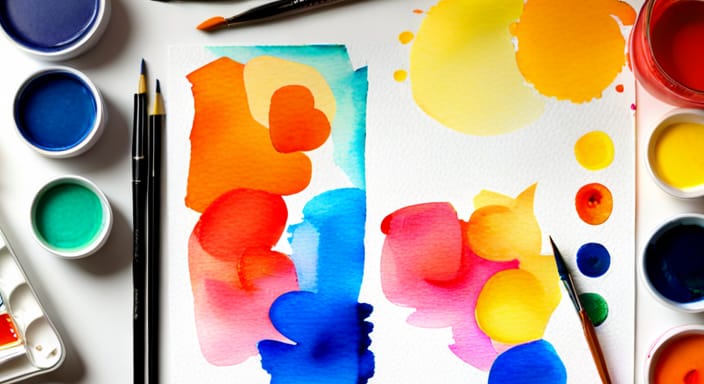Watercolor painting is a beautiful and expressive art form that can be enjoyed by beginners and experienced artists alike. If you’re just starting out with watercolors, this article will provide you with some valuable tips and tricks to help you get started on your artistic journey. So grab your brushes and let’s dive into the world of watercolor painting!
Watercolor Supplies for Beginners
Essential Watercolor Painting Supplies
Before you begin painting with watercolors, it’s important to have the right supplies. Here are some essential items you’ll need:
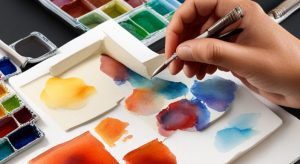
- Watercolor paints: Invest in a set of good-quality watercolor paints. Look for paints that are labeled as “student grade” or “beginner grade” for better affordability.
- Watercolor brushes: Start with a few basic brushes, such as a round brush for details and a flat brush for washes. Synthetic brushes are great for beginners as they are more affordable than natural hair brushes.
- Watercolor paper: Choose a heavyweight watercolor paper that can handle the wetness of the paint. Cold-pressed or rough-textured paper provides better results than smooth paper.
Best Watercolor Paints for Beginners
When it comes to choosing watercolor paints as a beginner, it’s important to select a set that offers a good range of colors. Some popular options for beginners include brands like Winsor & Newton Cotman, Prang, and Sakura Koi. These paints offer good quality at an affordable price.
Recommended Watercolor Brushes for Beginners
For beginners, a set of brushes that includes a small round brush (size 2 or 4), a medium round brush (size 6 or 8), and a flat brush (3/4 inch) is a great starting point. These brushes will allow you to experiment with different brush techniques and create a variety of effects.
Choosing the Right Watercolor Paper
The choice of watercolor paper can greatly affect the outcome of your paintings. Look for paper that is specifically designed for watercolor painting and has a weight of at least 140lb (300gsm). Cold-pressed paper with a slight texture is a popular choice among watercolor artists.
Watercolor Techniques for Beginners
Wet on Dry Technique
The wet on dry technique involves applying wet paint onto dry paper. This technique is great for creating detailed and controlled lines. To use this technique, simply wet your brush and load it with paint, then apply it to the dry paper. The paint will stay where you put it, allowing you to create precise shapes and lines.
Wet on Wet Technique
The wet on wet technique involves applying wet paint onto wet paper. This technique creates soft and blended effects. To use this technique, wet your paper with clean water using a brush or spray bottle. Then, load your brush with wet paint and apply it to the wet paper. Watch as the colors blend and spread beautifully on the surface.
Layering Techniques for Watercolor Painting
Layering is a common technique in watercolor painting that involves building up colors and values gradually. Start with light washes of color and let each layer dry before adding another. This technique allows you to create depth and richness in your paintings.
Preserving White Space in Watercolor Painting
Preserving white space is an important aspect of watercolor painting. To preserve white areas, use masking fluid or simply paint around the desired white areas. This technique adds contrast and highlights to your paintings.
Watercolor Painting Tips for Beginners
Start with Light Layers of Paint
When painting with watercolors, it’s best to start with light washes of paint and gradually build up the colors. This allows you to have better control over the intensity of the colors and avoid creating muddy or overworked paintings.
Use Proper Brush Techniques
Experiment with different brush techniques to create various textures and effects. Try dry brushing for adding texture, splattering for creating interesting patterns, and lifting off the paint using a clean, damp brush for correcting mistakes or adding highlights.
Practice Patience in Watercolor Painting
Watercolor painting requires patience. Allow each layer to dry completely before adding the next one to avoid colors bleeding into each other. Embrace the unpredictability of the medium and enjoy the process of building up your painting gradually.
Limit Your Palette for Color Harmony
As a beginner, it’s helpful to limit your color palette to a few colors. This will help you learn color mixing and achieve color harmony in your paintings. Start with primary colors (red, blue, and yellow) and gradually expand your palette as you gain more experience.
Work Out Your Composition with a Thumbnail Sketch
Before starting a painting, spend some time planning your composition. Create a quick thumbnail sketch to visualize the placement of elements and determine the focal point. This will help you create a balanced and visually appealing artwork.
Watercolor Painting Ideas for Beginners
Landscapes as a Classic Subject for Watercolor Painting
Landscapes are a popular subject for watercolor paintings. Start by exploring simple landscapes with a single focal point, such as a tree or a hill. Experiment with different techniques to depict skies, trees, water, and other elements of nature.
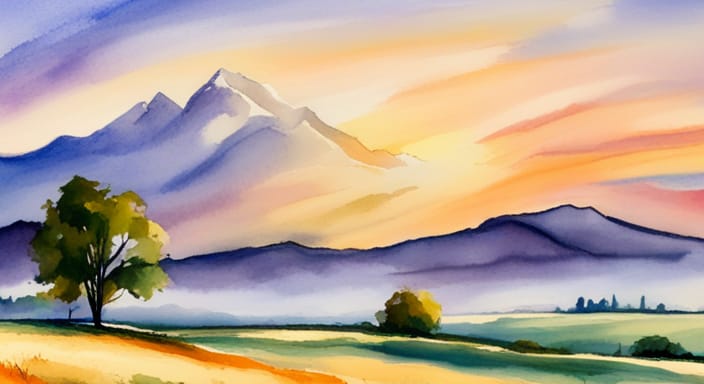
Painting Flowers with Watercolors
Flowers are another great subject for beginners to explore in watercolor painting. Start with simple flowers and gradually move on to more complex compositions. Experiment with different brush techniques to capture the delicate and vibrant nature of flowers.
Painting Animals with Watercolors
Watercolors can beautifully capture the essence and personality of animals. Start with simple animal portraits and practice capturing their unique features and expressions. Pay attention to the use of color and value to bring your animal paintings to life.
Painting Still Life with Watercolors
Still-life paintings offer a great opportunity to practice observation and composition. Arrange objects with varying shapes and textures, such as fruits, flowers, or everyday objects, and paint them using watercolors. Experiment with lighting and shadows to create depth and realism.
Watercolor Painting Mistakes to Avoid
Overworking Your Painting
One common mistake beginners make is overworking their paintings. Know when to stop and avoid continuously adding more details or layers. Sometimes, leaving certain areas unfinished can add interest and a sense of spontaneity to your artwork.
Using Too Much Water
Water control is essential in watercolor painting. Using too much water can result in colors bleeding into each other and losing their vibrancy. Start with a moderate amount of water and gradually adjust as needed.
Not Letting Layers Dry in Between
Allowing each layer to dry completely before adding the next one is crucial in watercolor painting. Failing to do so can result in muddy colors and unwanted blending. Be patient and let the watercolor process unfold at its own pace.
Not Planning Your Composition
A well-planned composition can make or break a painting. Take the time to think about the placement of elements, focal points, and overall balance before you start painting. This will help you create more compelling and visually pleasing artwork.
In conclusion, watercolor painting is a captivating and versatile medium that offers endless possibilities for artistic expression. By following these tips and exploring various techniques, you’ll be well on your way to creating beautiful watercolor artwork. So grab your paints, brushes, and paper, and let your creativity flow with the enchanting world of watercolors!
